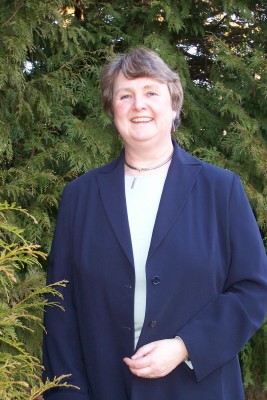New Light on the Settlement of the Land of the Sagas
by Dr. Colleen Batey
Margaret and Richard Beck Lectures
University of Victoria
Article by Megan Stewart
February 28, 2007

Dr. Colleen Batey laughs with admiration when she speaks about a recent Reykjavík City Museum exhibition, 871 ± 2. It’s an apt title that the University of Glasgow Lecturer in Archaeology finds amusing and fitting.
It’s a fantastic name for an absolutely superb exhibition,
she tells an audience at the University of Victoria during the first of three presentations with the Margaret and Richard Beck Lectures on Icelandic Literature. During the lectures—which covered first settlements, British-Icelandic lineage, and the overall Norse cultural footprint—Dr. Batey described how Iceland was one of several North Atlantic colonies established by the Scandinavians as they expanded through the region.
An excavation site in Reykjavík’s old centre, says Dr. Batey, has unearthed one of Iceland’s oldest structures. A large, central hearth and turf walls laid in a herringbone pattern suggest this Reykjavík dwelling was indeed built and inhabited by Vikings. The turf walls also reveal the homemakers arrived in Iceland during the ninth century. Cut from Iceland’s wind-swept tundra, the turf shows a thin coating of volcanic ash, known as tefra, and this residue allows researchers to narrow the date of construction to a period immediately after an 870 eruption. Hence the name of the exhibit: 871 ± 2.
This house would have been occupied somewhere about 873,
confirms Dr. Batey, who specialises in Scandinavian settlement and burial practices in the North Atlantic. For an archaeologist, that’s a fantastic thing to be able to say. We usually have to give a plus or minus of about 100 to 200 years.
Five upright posts likely supported the roof around a fireplace in the centre of the dwelling. Of course, those of you familiar with the Icelandic climate will appreciate the need for a central hearth,
she says with a smile and a wry tone her audience would come to recognise. All kinds of domestic activities took place at the fireside, including weaving, cooking, child-rearing, and ivory-carving. Three substantial sections of walrus ivory found nearby suggest Norse settlers exploited the natural resource in Iceland as they did in Greenland.
The wide range of domestic and trade articles found in Norse dwellings, workshops and gravesites can be used to map a clear cultural footprint as these well-travelled populations expanded from Scandinavia to the British Isles and then the wider region of the North Atlantic. Certain artefacts distinguish the Norse as visitors and inhabitants—an archaeological I was here
—that Dr. Batey and others are able to trace throughout Iceland, the Faroe Islands, Greenland, and ultimately L’Anse aux Meadows in Newfoundland.
Tracing commodities and trade artefacts allows researchers to establish the development of Norse expansion. The Vikings operated a bullion economy, meaning they relied on the weight of precious metals, such as silver, instead of using coins, whose face value did not interest them. Silver was imported from markets in the near east (Baghdad was an important centre) and reached Scandinavia through trade routes where it was weighed and, as necessary, hacked into pieces. A particular coin hoard shows a partial set of scales, fragments of coins, and bars of silver. These elements are particular to Norse expansion, says Dr. Batey.
Other trade items linked to Norse expansion include ceramics, glass beads, ivory, and amber. Domestic items found throughout the North Atlantic comprise antler combs, textiles, and even a flat, whalebone plank likely used as an ironing board. The Norse also adopted items as they interacted with other cultural groups, and one useful tool acquired from Celtic people in Ireland was the ringed pin, a simple bronze pin used for fastening fabric.
Along with this cultural evidence, DNA evidence suggests the first people to arrive in Iceland were not only from Norway, but also the British Isles. The arrival of roughly 430 Norse in the 870s marks the beginning of the main period of Icelandic settlement that brought about fifty thousand settlers to the island between 870 and 930. These settlers included a considerable number of Celts, Dr. Batey says, as Scandinavians left Norway for western Celtic destinations before expanding northward. Several female graves, for example, reveal rich, Celtic cultural packages. The mitochondrial DNA passed through female lineage offers further support to this Celtic connection.
Though small, a piece of a gold brooch is of great archaeological significance: This is important,
explains Dr. Batey, because it reminds us of continuing ties to those north-western parts of Scotland and Ireland into Iceland itself.
Norse expansion continued into the High Arctic, though the cultural footprint in this region is spread quite thin.
What we’re looking at is almost the end of the line from this great expansion of European peoples from Scandinavia across the North Atlantic into the High Arctic and maybe beyond,
says Dr. Batey.